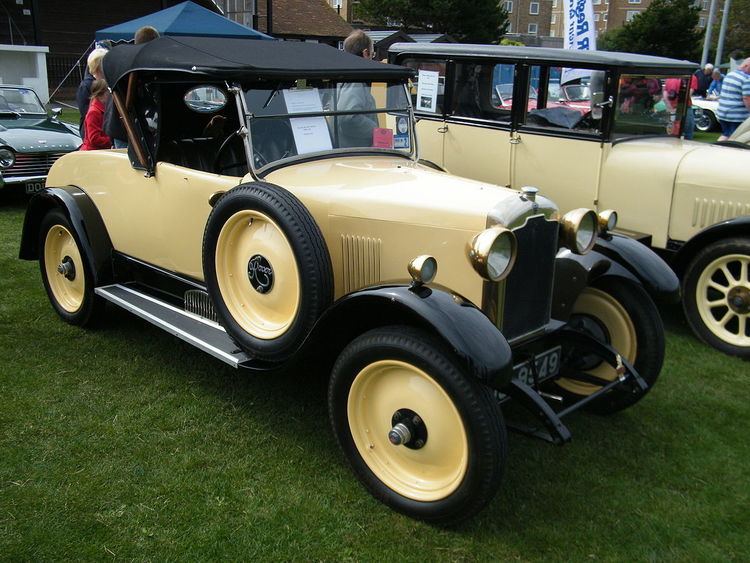Length 132 inches (3,353 mm) | Width 63 inches (1,600 mm) | |
 | ||
Body style open 2-seater or 4-seaterfixed head coupé4-door Weymann saloon Wheelbase standard: 94 inches (2,388 mm)de luxe: 99 inches (2,515 mm)super: 104 inches (2,642 mm)Track 48 inches (1,219 mm) | ||
The Rover 9 was a small car produced by Britain's Rover car company. It had a 1074 cc 9 fiscal horsepower four-cylinder engine. Manufactured from 1924 to 1927 it was first supplemented then replaced by Rover's 10-12 model.
Contents
Engine
A Mark Wild and staff designed 1074 cc water-cooled four-cylinder engine with overhead valves announced August 1924 supplemented then replaced the Rover 8 air-cooled twin and the new vehicle was named 9/20 The new engine with its clutch and gearbox are mounted as a unit to the mainframe at four points.z
Advertised by Rover as "The Nippy Nine" with emphasis on its water coolant circulated by pump, pressure lubricated engine, three speed gearbox and silent worm (rear) axle. "Super" models were supplied with rod-operated four-wheel brakes. Steering was by rack and pinion, worm and segment in the more expensive cars. At first the open 4-seater cars had just one door beside the front passenger's seat.
Bodywork
The wheelbase was 104 inches and track 48 inches. The 4-seater sports had a 99-inch wheelbase.
Road test
The test car was the sports model with aluminium pistons, double valve springs, higher gear ratios and a lighter body. The car was considered to run pleasantly and do around 60 mph in top gear. When supplied for export the radiator is given a fan. There were compalints about accessibility for servicing and minor repairs. The engine was thought to be unusually smooth for a two-bearing product even at high speed. The steering wheel shook on rough roads otherwise controls were smooth and even. A final comment was "at the price one cannot fairly grumble at three speeds".
